When the sun disappears, you'll need reliable backup methods for cooking and power. Start with a gas stove that you can light manually using long matches or nozzle lighters. Keep several alternative cooking options ready, including portable propane stoves, biomass stoves like the Inferno Pro, and insulated cooking boxes that retain heat for 4-6 hours. For power storage, combine battery banks with smart energy management systems to optimize usage during low sunlight periods. Don't forget essential tools like manual can openers and multiple fuel sources. These backup solutions just scratch the surface of creating a thorough emergency preparedness plan.
Understanding Cloud Cover Challenges
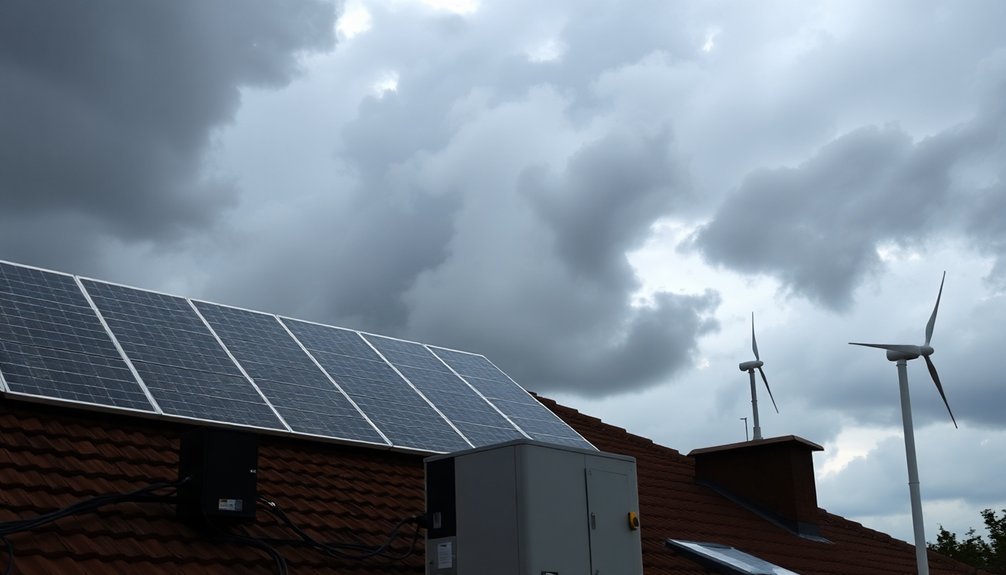
While cloud storage offers tremendous flexibility, managing data across multiple platforms presents significant challenges for businesses today. When you're dealing with fragmented data across various cloud and local storage locations, you'll need robust strategies to maintain data integrity and consistency.
You'll face critical security and compliance hurdles, particularly if you're in a regulated industry. Using multi-factor authentication, you can significantly enhance the security of your backup data access. You must implement thorough encryption and access controls while ensuring your service level agreements align with your security needs.
Additionally, you'll encounter bandwidth limitations that can affect your backup strategies and slow down other applications. Local backups become essential for faster recovery times.
The complexity doesn't end there – you'll need to manage costs carefully. From data recall fees to bandwidth consumption charges, expenses can accumulate quickly while you balance workloads across multiple providers.
Essential Indoor Kitchen Equipment
You'll want to stock your kitchen with reliable manual tools like can openers, box graters, and colanders that don't require electricity for basic food preparation and storage.
Your indoor cooking setup should include versatile equipment like Dutch ovens and baking pans that work equally well on gas stovetops or in conventional ovens during power outages. A set of sharp knives is crucial for maintaining efficient food preparation capabilities when electric tools are unavailable.
Keep electric appliances like slow cookers and indoor grills ready as backup cooking methods when you have generator power or alternative energy sources available.
Basic Food Storage Tools
Proper kitchen equipment forms the backbone of an effective food storage system. You'll need airtight Rubbermaid containers for dry goods, glass containers for ingredient transport, and stackable deli containers in pint and quart sizes for vegetables and liquids.
Hotel pans offer durability and versatility for various storage needs. Regular cleaning with sanitizing wipes helps maintain proper food safety standards.
For organization, make sure you're using Metro shelves to store larger items and appliances, while IKEA steel rails with S-hooks work perfectly for hanging utensils and pots.
Don't forget to label all containers with dates and contents.
In your refrigeration setup, plastic inserts help maximize space in both walk-in and reach-in coolers.
Cold storage is essential during extended periods without power, so consider combining chest freezers with upright units for ideal frozen food preservation.
Emergency Power Cooking Systems
Should power outages strike, having reliable emergency cooking systems becomes essential for indoor food preparation.
You'll find the Inferno Pro Biomass Outdoor Stove particularly useful, as it can reach temperatures up to 1,200 degrees and boil water in just 2 minutes using Fire Starter Packs.
The StarFire Camp Stove offers a lightweight alternative that runs on simple kindling or leaves. Its low-smoke design makes it practical for various cooking needs. The included ready-hour cooking kit provides essential stainless steel items for meal preparation.
You'll want to complement these systems with reliable fire starters like waterproof matches that work in harsh conditions or the Freedom Flame Flexible Arc Lighter that uses flameless technology.
For thorough preparation, consider the Ultimate Solar Power & Cooking Emergency Food Kit, which includes a stove, solar charger, and a 4-week food supply delivering 2,000+ calories daily.
Gas Stove Backup Methods
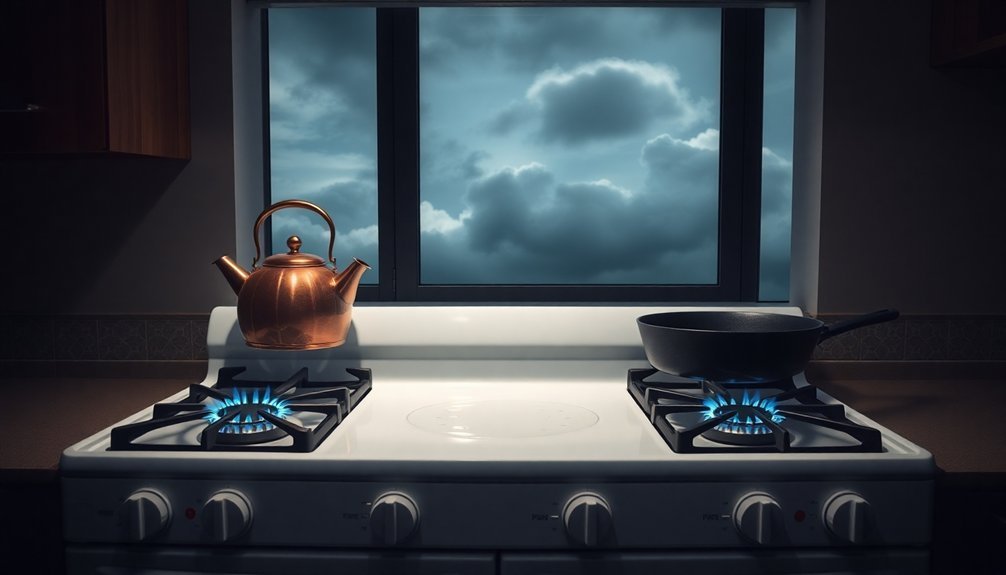
When your power goes out, a gas stove can still function as a reliable cooking source if you know how to operate it manually. You'll need a long wooden match or nozzle lighter to ignite the burner. Hold the ignition source near the flame ports while slowly opening the valve to a low setting.
Before attempting manual lighting, check your stove's manual to confirm it supports this method. Keep proper ventilation and maintain a fire extinguisher nearby.
For the oven, you'll need to monitor temperatures manually since electronic controls won't work.
If your gas stove isn't operational, you've got several backup options. You can use outdoor propane grills, white gas stoves, or alcohol stoves. MRE heaters and fire pits with grills also work well.
Remember to store appropriate fuel supplies and maintain your backup equipment regularly.
Solar Power Storage Options
You'll need to carefully assess your household's power needs to determine the right battery capacity for your solar storage system.
When planning your backup power strategy, you can integrate multiple storage solutions like battery banks and thermal storage to create a more resilient system.
Smart energy management systems help you monitor and control your stored power, ensuring you're making the most efficient use of your backup resources during sunless periods.
Battery Capacity Planning
Planning your battery capacity effectively requires a detailed assessment of your household's energy consumption patterns and backup power needs.
You'll need to calculate your daily electricity usage in kilowatt-hours and identify which appliances are essential during outages. Start by listing all devices you want to power and their runtime requirements.
Consider factors like weather conditions and seasonal variations that might affect your energy needs. Remember to account for battery degradation over time – most batteries lose capacity gradually.
You'll want to plan for 3-5 days of backup power, depending on your location's typical weather patterns.
When sizing your battery bank, factor in your solar panel system's capacity and efficiency. Your battery storage should align with both your daily consumption and your panels' generation capabilities.
Alternative Power Integration
Solar power storage systems provide essential backup options for maintaining energy independence when sunlight isn't available. You'll find several viable solutions, from residential battery systems to large-scale thermal storage.
| Storage Type | Best For | Key Advantage |
|---|---|---|
| Battery | Homes | Easy maintenance |
| Thermal | Companies | 30-year lifespan |
| Mechanical | Industrial | High efficiency |
| Microgrids | Communities | Grid resilience |
| Hybrid Systems | All users | Versatility |
While battery storage remains the most practical choice for your home, with costs between $9,000-$12,000 and a 30% tax credit available, thermal storage using molten salt works better for larger operations. You might consider mechanical options like compressed air or pumped hydro if you're managing an industrial facility. Microgrids can integrate multiple storage types, offering the most thorough backup solution during outages.
Energy Management Systems
When considering long-term energy independence, effective storage systems serve as the backbone of reliable solar power integration.
You'll find multiple storage options to match your needs and budget. Lithium-ion batteries offer high energy density and durability, while lead-acid alternatives provide a more cost-effective solution despite shorter lifespans.
For larger-scale storage, thermal systems using molten salt can store energy for months, though they require significant initial investment.
You can also explore chemical storage through hydrogen fuel cells or mechanical options like flywheels and compressed air systems.
Modern battery systems, such as SunVault Storage, combine seamlessly with your solar setup, managing peak demand and providing backup power during outages.
These systems use smart software to optimize energy usage and maximize utility credits from excess power generation.
Insulated Cooking Box Solutions
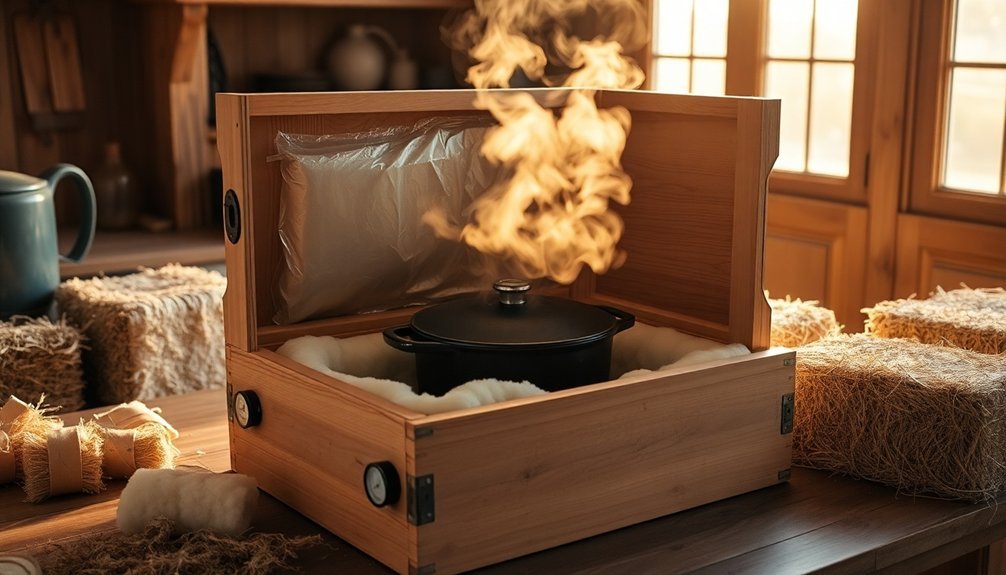
To maintain food preparation capabilities during sunless periods, insulated cooking boxes offer a versatile and efficient alternative. You'll find these containers can retain heat for 4-6 hours, allowing for 'low and slow' cooking methods that maximize nutrition while using minimal energy.
Choose high-performance materials like EPP or PIR sheets for your cooking box, as they're durable and can handle temperatures from -40°C to +120°C.
You'll want to guarantee tight-sealing lids and proper insulation without air gaps for best results. The design should include sturdy handles for easy handling and quick access to your food.
You can enhance this cooking method by adding WiFi-enabled plugs for temperature control.
These boxes work well for various dishes, from individual meals to larger portions, making them practical for sunless emergency situations.
Alternative Heat Source Planning
Since reliable heating remains essential during periods without sun, having multiple alternative heat sources can protect your family's comfort and safety.
You'll want to evaluate fuel-based options like pellet stoves and propane heaters, which can operate independently of electricity. Gas inserts and catalytic heaters provide efficient indoor warmth when properly ventilated.
Don't overlook passive heating methods – materials with high thermal mass like concrete and brick can store heat effectively.
You can supplement these with affordable DIY solutions such as terracotta pot heaters or tea candle setups.
For a more thorough approach, think about integrating backup systems like wood-fired rocket mass heaters or hybrid systems that combine heat pumps with thermal storage tanks.
Remember to maintain proper ventilation and follow safety protocols for any heating method you choose.
Emergency Cooking Equipment Checklist
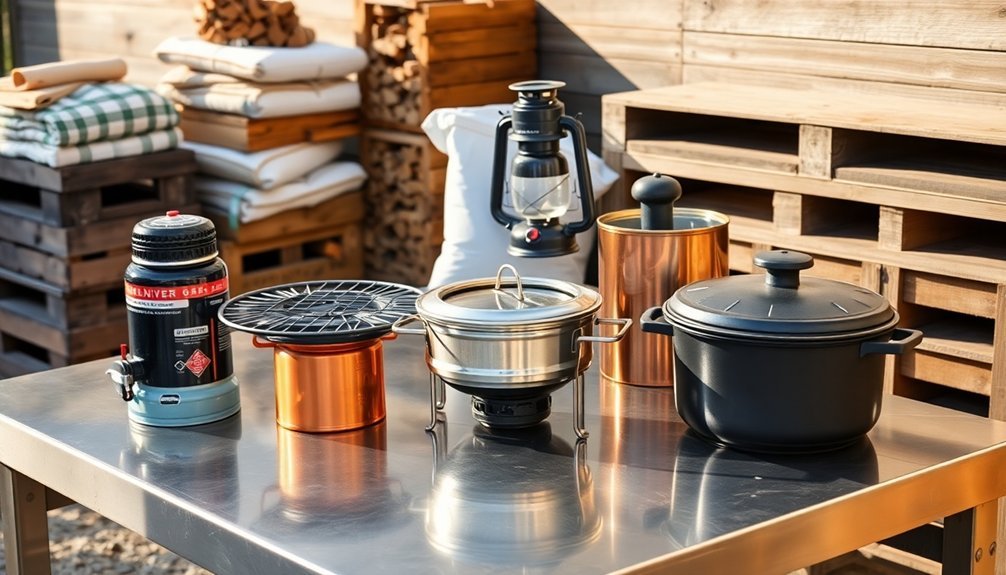
Being prepared for sun-deprived periods requires a well-stocked emergency cooking setup.
You'll need reliable cooking equipment like portable gas stoves and camping cookstoves for indoor use, while charcoal grills and camp stoves work well outdoors.
Don't forget essential cooking tools including manual can openers, multi-tools, and basic utensils.
Stock up on various fuel sources such as chafing dish fuel, batteries, and matches.
If you're planning for larger-scale needs, consider a commercial generator.
Keep your food preparation sanitary with disposable plates, cups, and clean cooking utensils.
Add plastic tarps for makeshift shelter and cleanliness.
For food safety, maintain a refrigerator thermometer and water purification tablets or chlorine bleach.
A candle warmer can serve as a compact heating solution for small portions.
Frequently Asked Questions
How Long Can Backup Tapes Survive in Complete Darkness?
Your backup tapes can survive 15-30 years in complete darkness when you store them at temperatures between 16-25°C and maintain relative humidity of 20-50%. You'll need proper storage conditions to achieve this longevity.
Do Magnetic Storage Devices Perform Differently Without Natural Sunlight?
You won't notice any difference in magnetic storage performance without natural sunlight. Your devices work the same in darkness, as they don't rely on light for operation. Actually, darkness helps preserve magnetic media.
Can Lack of Sunlight Affect Data Center Temperature Control Systems?
You don't need to worry about lack of sunlight affecting your data center cooling systems. They rely on internal cooling mechanisms and mechanical systems, not natural light, to maintain ideal temperatures for your equipment.
Are There Specific Backup Schedules Recommended During Extended Periods of Darkness?
You'll want to maintain daily incremental backups during off-peak hours, weekly full backups, and monthly deep checks. Real-time backups are essential for critical data, regardless of external lighting conditions.
How Do Underground Backup Facilities Maintain Optimal Humidity Without Solar Power?
You'll maintain ideal underground humidity using generator-powered HVAC systems, mechanical dehumidifiers in ventilation tunnels, and automated sensors. These components work together with backup power to regulate moisture levels between 30-50% constantly.
In Summary
You'll find peace of mind knowing you've prepared multiple backup cooking methods for cloudy days. Keep your indoor kitchen stocked with gas stoves, power banks, and thermal cookers. Don't forget to maintain solar battery storage and insulated cooking boxes. By planning ahead with diverse heating alternatives and emergency equipment, you'll handle any sun-deprived situation confidently and keep your household running smoothly.

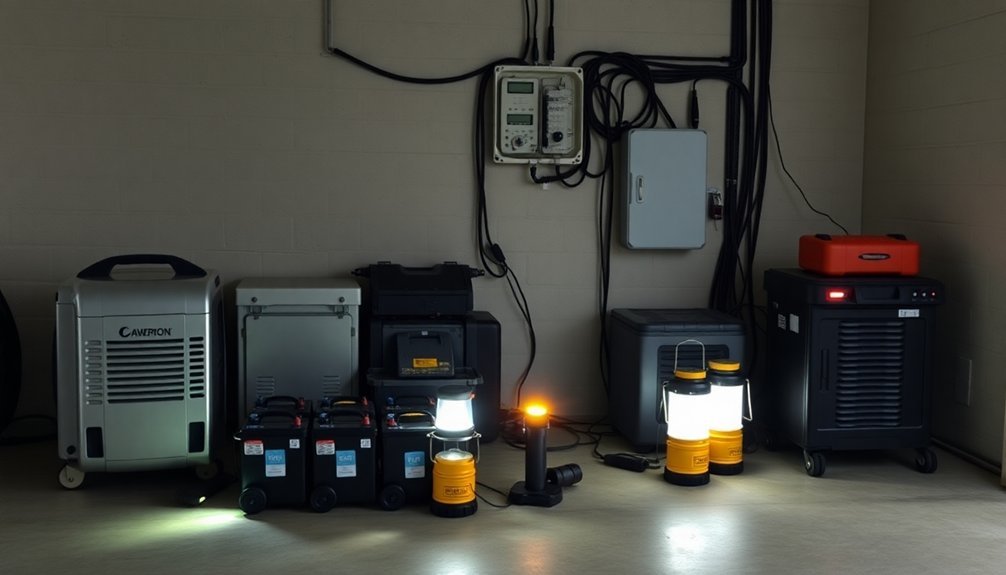
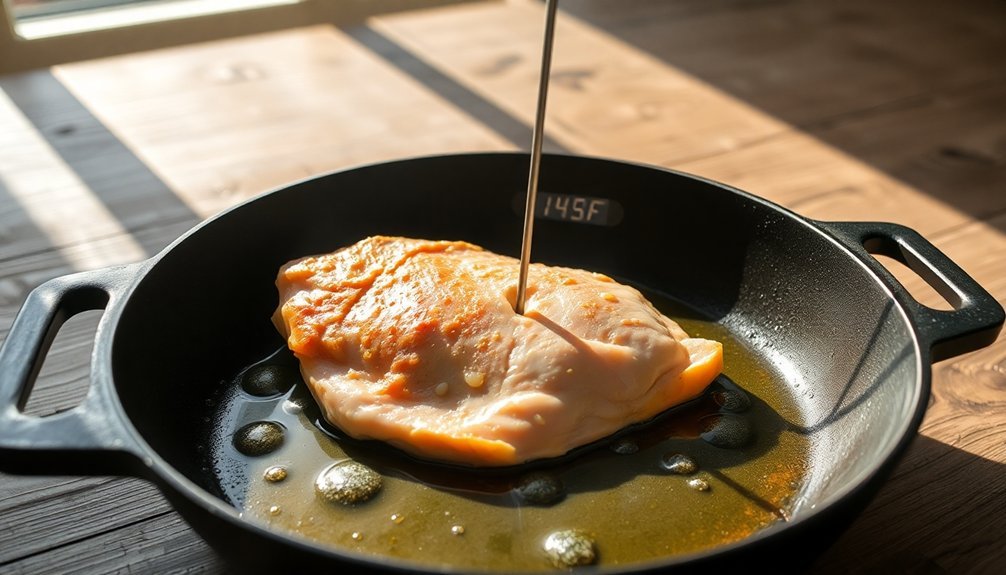
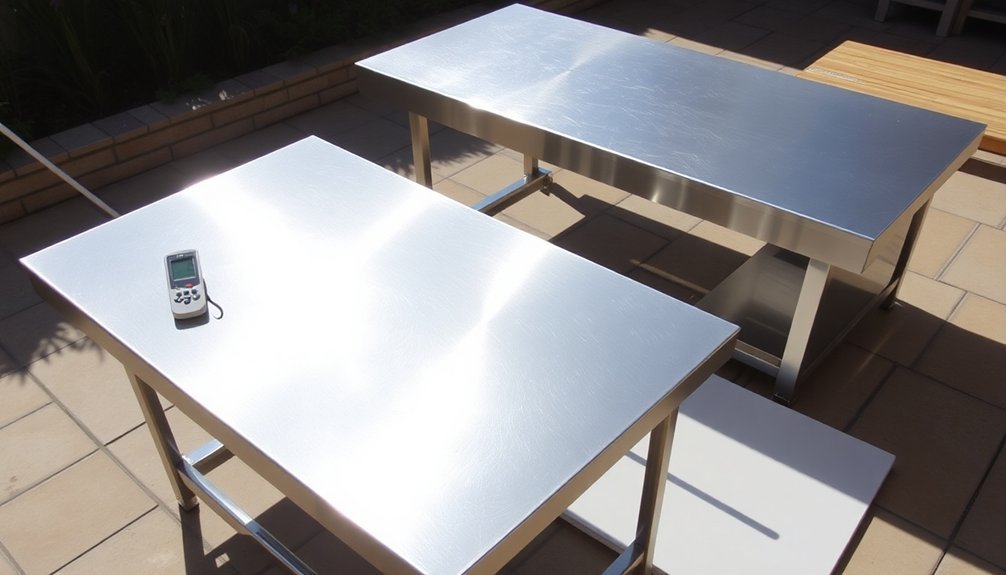
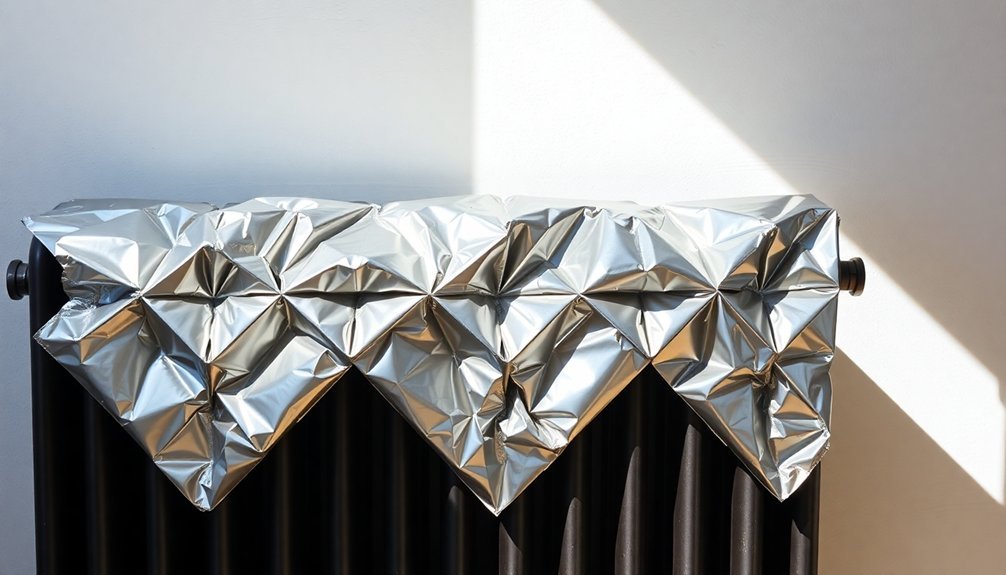
Leave a Reply